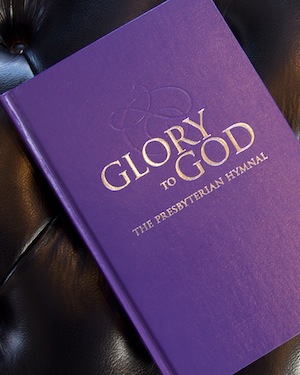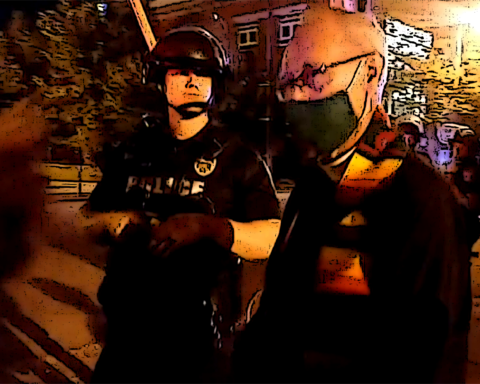
It is most unlikely that Reginald Heber, vicar of the village church of Hodnet, meant to be hostile to or dismissive of the peoples of the world when he penned a hymn urging the church to its missionary task. Heber spoke and wrote often of the need for missionary work and later backed up his words with three years service as Bishop of Calcutta. His frequent travels and tireless work for those in his charge there were ruinous to his health, however, and Heber died in India in 1826. He was also a hymnodist of note, with “Holy, Holy, Holy” his most famous text today.
Nonetheless, his most famous mission hymn left a mixed and uncertain legacy at best. Heber wrote “From Greenland’s Icy Mountains” in 1819, before his appointment as bishop. It gained wide acceptance in the nineteenth century, but twentieth-century readers and singers eventually found his imagery both trite and offensive. In particular the image in which “the heathen in his (sic) blindness/bows down to wood and stone”, a verse in which “every prospect” of an exotic land pleases “and only man is vile”, and the utterly oppositional couplet “they call us to deliver/their land from error’s chain” are among the most difficult of Heber’s verses for later readers to digest.
Not all of the nineteenth century’s mission hymns indulge in the exoticism of Heber’s text, but the oppositional, “us-them” nature of the hymn has many counterparts. From the opposite end of that century, H. Ernest Nichol’s “We’ve A Story to Tell to the Nations” continues with the phrase “that shall turn their hearts to the right,” again evoking the dualism of saintly “us” and sinful “them.” (A counter-example is John Marriott’s nearly contemporary “Thou, Whose Almighty Word,” which urges the spread of the gospel without undue descent into us-them language.)
___________________________________________
Perhaps it seemed natural to take hymns such as “How Great Thou Art” or “What a Friend We Have In Jesus” and translate them into Spanish or Korean as needed in order to teach the faith, no matter how divorced from the musical traditions of those peoples such hymns might have been.
___________________________________________
To observe the us-them dynamic in Heber’s hymn is not to demean Heber or to suggest that he was somehow uniquely paternalistic in his outlook. It is, however, important to identify the us-them undercurrent in this hymn and others that has continued to permeate the mindset of the church, even after such hymns have faded from common usage.

Hymnals could not ignore the increasingly diverse and even global nature of the church forever. The Hymnbook (perhaps better known among modern-day Presbyterians as “The Red Hymnal”), as published in 1955 by a consortium of five Presbyterian and Reformed denominations, includes spirituals such as “Lord, I Want to Be a Christian,” “Were You There?,” and “Let Us Break Bread Together,” as well as Harry T. Burleigh’s adaptation of a spiritual tune for “In Christ There Is No East or West.” Also included are “Father, Long Before Creation,” a translation of an anonymous Chinese text, and “O Bread of Life, for All Men (sic) Broken,” a Last Supper-themed text by the remarkable Chinese hymnodist Timothy T’ingfang Lew, translated by Presbyterian missionary Frank W. Price.
Of course, that inclusion didn’t always go smoothly. “Let Us Break Bread Together” lost the distinctive rhythmic kick characteristic of the word “together” in each verse, instead featuring a “straight” rhythm draining the tune of much of its energy. And Su Yin-Lan’s tune for “O Bread of Life, for All Men Broken,” written in a distinctive Chinese melodic mode and style, was harmonized in “Western” fashion, leaving the tune sounding more like an Appalachian folk song than anything Chinese. (As most hymn singers will recognize, “Let Us Break Bread Together” has regained its rhythmic kick in subsequent hymnals.)
___________________________________________
Indulging in the privilege of only singing our songs too easily leaves us unable to sing or hear any other song.
___________________________________________
More common was the exporting of European-American hymns into the mission field. Teaching the faith through song was hardly new; Colossians 3:16 famously instructs Christians to teach one another with “psalms and hymns and spiritual songs” (KJV), so perhaps it seemed natural to take hymns such as “How Great Thou Art” or “What a Friend We Have In Jesus” and translate them into Spanish or Korean as needed in order to teach the faith, no matter how divorced from the musical traditions of those peoples such hymns might have been. You can see these and other traditionally popular American hymns supplied with linguistic transliterations in The Presbyterian Hymnal (blue) and language translations in Glory to God (purple or red).
 As a result, traditional European-American (“white”) hymnody got sold as being part of the package of Christianity, and left mainline Protestant churches with an unmistakably European-American core repertory of hymns, presenting to Christians of different cultures a musical version of the “sharp white background” described by Zora Neale Hurston, as cited by Alexis Presseau Maloof in an earlier article in this issue. Indulging in the privilege of only singing our songs too easily leaves us unable to sing or hear any other song.
As a result, traditional European-American (“white”) hymnody got sold as being part of the package of Christianity, and left mainline Protestant churches with an unmistakably European-American core repertory of hymns, presenting to Christians of different cultures a musical version of the “sharp white background” described by Zora Neale Hurston, as cited by Alexis Presseau Maloof in an earlier article in this issue. Indulging in the privilege of only singing our songs too easily leaves us unable to sing or hear any other song.
Nearly twenty years ago, J. Nathan Corbitt explored the question of musical diversity in the church in The Sound of the Harvest: Music’s Mission in Church and Culture. Corbitt prefaces his study with the idea that “…Music is always cross-cultural. Its meanings are so bound to the people and cultures who make it, we often fail to see our commonness because of our strangeness. God’s song of a redemptive call and purpose are found in every place.” [1]
Later, Corbitt explores how individuals and the church escape this cultural captivity. Adapting James Banks’s theories on ethnic identity development, Corbitt suggests that musical identity groups need not remain monocultural; it is possible to grow into a dynamic musical identity, even in the church. [2]
___________________________________________
It’s easy to take refuge in our 91% white demographics fact and ‘stick with what we know’. But that’s not a faithful response. It doesn’t see the church as Christ’s above all, in all the glory and complexity and diversity Christ welcomes and calls.
___________________________________________
In Corbitt’s adaptation of Banks’s categories, “psychologically captive” groups are sometimes pushed or induced to give up their own musical identities in favor of those imposed by a more dominant outside culture. If the translated popular American hymns represent a type of psychological musical captivity, the increasing number of hymns created in and by the global church marks a move to “identity clarification,” in which those groups rediscover and reclaim their own musical heritage as a means of expressing their faith and praise. Such hymns are represented in Glory to God to a degree not previously found in Presbyterian hymnals.
 Corbitt finds the dominant American, i.e. white Christian culture “encapsulated.” Acknowledging the truism of the Sunday morning worship hour as the most segregated in America, Corbitt finds the church music of that culture at least as concerned with reflecting and upholding cultural (and typically “white”) values such as orderliness or musical refinement as with proclaiming the gospel or expressing faith. Musically monolingual, the American Protestant mainline church (and frequently evangelical traditions in the US as well) too often conforms itself to its culturally identified music and is unable to hear or appreciate the musical faith expressions of other groups. It is possible to become musically multilingual; this does, however, require intentional and regular interaction with cultural or ethnic groups that are not its own, and the music by which those groups express their faith and worship.
Corbitt finds the dominant American, i.e. white Christian culture “encapsulated.” Acknowledging the truism of the Sunday morning worship hour as the most segregated in America, Corbitt finds the church music of that culture at least as concerned with reflecting and upholding cultural (and typically “white”) values such as orderliness or musical refinement as with proclaiming the gospel or expressing faith. Musically monolingual, the American Protestant mainline church (and frequently evangelical traditions in the US as well) too often conforms itself to its culturally identified music and is unable to hear or appreciate the musical faith expressions of other groups. It is possible to become musically multilingual; this does, however, require intentional and regular interaction with cultural or ethnic groups that are not its own, and the music by which those groups express their faith and worship.
A final step might be what Banks would term a “national identity.” In the case of predominantly white mainline and evangelical American churches and their musics, such an identity would describe a church that can sing and appreciate its own musical heritage and also the many musical heritages within the global church – such traditions as African-American spirituals in their profound range of emotional expression; spiritual songs of the Caribbean and South America, of peoples with a keen experience of oppression and liberation and a dazzling variety of musical styles upon which to draw; songs from the African continent, packed with rhythmic vitality and emotive expressiveness; and indeed songs from every corner of the globe, which also means songs from every corner of this country, where the global church lives all around us. Such a church sings the songs of the global church not as a form of cultural appropriation, but as a genuine act of worship and community.
___________________________________________
When an individual church truly knows itself to be part of the whole body of Christ, a part of its response will be to learn other musical languages and be instructed in the faith by them, learning new truths that the hymns and songs of its own culture may not express.
___________________________________________
As a pastor who chooses hymns on a regular basis, I stand under conviction here as much as anyone who reads this article, if not more so. It’s easy to stick with the familiar and comfortable and to save the more challenging songs of the global church for “another Sunday.” Even as the global church (or more simply and accurately, the church) is represented more broadly than ever before in Glory to God, it’s still a pretty white hymnal (even if it has a cool purple cover), reflective of the 91% white denomination that called it into being. It’s easy to take refuge in that demographic fact and ‘stick with what I know’ – or what the congregation already knows.
 But that’s not a faithful response. It doesn’t see the church – any and every church – as Christ’s above all, in all the glory and complexity and diversity Christ welcomes and calls.
But that’s not a faithful response. It doesn’t see the church – any and every church – as Christ’s above all, in all the glory and complexity and diversity Christ welcomes and calls.
When an individual church truly knows itself to be part of the whole body of Christ, a part of its response will be to learn other musical languages and be instructed in the faith by them, learning new truths that the hymns and songs of its own culture may not express. Realizing that our practices and our hymns and songs don’t have a monopoly on the church’s expression of faith and worship is a first, possibly painful, but deeply necessary step towards laying aside the privilege of only singing our song, taking up the song of the whole church, and finally, truly singing together.
____________________________________________________________
[1] J. Nathan Corbitt, The Sound of the Harvest: Music’s Mission in Church and Culture (Grand Rapids: Baker, 1998), 8.
[2] James A. Banks, Multiethnic Education: Theory and Practice, 2nd ed. (Boston: Allyn & Bacon, 1988).
*****
AUTHOR BIO: Rev. Charles S. Freeman is a 2014 graduate of Union Presbyterian Seminary (M.Div.) and pastor of Grace Presbyterian Church in Gainesville, Florida. In his previous life he taught music history at several colleges and universities, most recently the University of Kansas.
Read more articles in this issue Call to Confession: Race, White Privilege and the Church!






Unbound Social